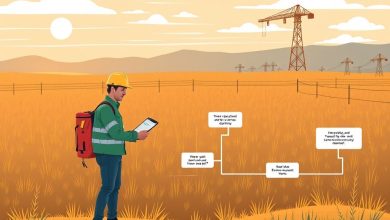Field Service Management with Biometric Check-In Enhancing Efficiency and Security

Introduction
Field Service Management (FSM) is a critical component of modern business operations, particularly for companies that rely on mobile workers to deliver services or products directly to customers. In recent years, FSM has evolved significantly with advancements in technology, including the integration of biometric check-in systems. This article explores the concept of Field Service Management with Biometric Check-In, examining its benefits, implementation strategies, and potential challenges.
The Evolution of Field Service Management
Field Service Management has been around for decades, but its evolution has been marked by technological innovations. Traditionally, FSM relied heavily on manual processes such as paper-based schedules, phone calls, and physical signatures. However, with the advent of cloud computing, mobile devices, and artificial intelligence, FSM has transformed into a sophisticated digital ecosystem.
Key Components of Modern FSM Systems
Modern FSM systems typically include:
- Scheduling and dispatching tools
- Mobile workforce management software
- Customer relationship management (CRM) integrations
- Inventory management features
- Reporting and analytics capabilities
These components work together to streamline operations, improve efficiency, and enhance customer satisfaction.
The Role of Biometric Check-In in Field Service Management
Biometric check-in systems have become increasingly popular in various industries, including field service management. These systems utilize unique biological characteristics, such as fingerprints, facial recognition, or iris scans, to verify identities and record attendance.
Benefits of Biometric Check-In in FSM
The integration of biometric check-in systems offers several advantages:
- Improved accuracy and security of identity verification
- Reduced administrative burden through automated data collection
- Enhanced accountability among field technicians
- Faster check-in processes, leading to increased productivity
- Compliance with data protection regulations
Implementation Strategies for Biometric Check-In in FSM
Implementing a biometric check-in system in Field Service Management requires careful planning and execution. Here are some key considerations:
Hardware Selection
Choose appropriate hardware devices that support biometric authentication. Options may include:
- Smartphones with built-in fingerprint readers
- Dedicated biometric scanners
- Wearable devices with integrated biometrics
Consider factors such as durability, ease of use, and compatibility with existing FSM software.
Software Integration
Ensure seamless integration between the biometric check-in system and existing FSM software. This may involve:
- API development for data exchange
- Customization of FSM platforms to accommodate biometric data
- Training staff on new systems and procedures
User Training
Implement comprehensive training programs for field technicians to familiarize them with the new biometric check-in process. This should include:
- Step-by-step instructions for using biometric devices
- Troubleshooting common issues
- Privacy and data protection guidelines
Data Management and Security
Develop robust data management protocols to ensure the secure storage and transmission of biometric information:
- Implement encryption for all stored data
- Establish access controls and user permissions
- Regularly audit and update security measures
Case Studies: Biometric Check-In in Field Service Management
Several companies have successfully implemented biometric check-in systems in their FSM processes. Here are two notable examples:
Example 1: Utility Company
A large utility company replaced traditional sign-in sheets with a mobile app featuring facial recognition technology. The results were impressive:
- Reduced check-in time by 40%
- Eliminated errors in attendance tracking
- Improved customer satisfaction through faster service delivery
- Enhanced data privacy compliance
Example 2: HVAC Services Provider
An HVAC services company integrated fingerprint readers into their technicians’ tablets. This led to:
- Increased accountability among field staff
- Faster resolution of billing discrepancies
- Streamlined reporting for payroll and performance metrics
- Reduced administrative overhead
Challenges and Considerations
While biometric check-in systems offer numerous benefits, there are also potential challenges to consider:
Cost Implications
Implementing biometric check-in systems may require significant upfront investment in hardware and software. Ongoing maintenance and support costs should be factored into budget planning.
User Acceptance
Some employees may resist new technology or feel uncomfortable with biometric authentication. Address these concerns through clear communication and training programs.
Data Privacy Concerns
Ensure compliance with data protection regulations such as GDPR or CCPA. Implement strict access controls and data retention policies.
Technical Issues
Biometric devices may occasionally malfunction or require software updates. Establish protocols for troubleshooting and resolving these issues quickly.
Conclusion
Field Service Management with Biometric Check-In represents a significant advancement in the field service industry. By leveraging biometric technology, companies can enhance security, improve efficiency, and streamline operations. However, successful implementation requires careful planning, user training, and ongoing support.
As FSM continues to evolve, we can expect further innovations in biometric authentication and other technological advancements. Field service managers should stay informed about these developments and consider how they can best integrate them into their existing processes to maintain a competitive edge in an increasingly digital landscape.
By embracing biometric check-in systems, field service organizations can take a major step towards optimizing their operations and delivering superior service to their customers.




